Garry Nelson's Left Foot
Well-known member
It's here! WHC X!
You should know what it's all about by now but, in case you don't, this is a tournament that is all about a beasts hardness. It's not about the size of the dog in the fight but the size of the fight in the dog. Now, we all have differing opinions on what makes a beast hard but it must surely include factors such as aggression, ability to hand out a pasting, ability to take a pasting and anything else along those lines.
These are the group stages. There are ten beasts. Four will progress to the knockout rounds. You have ONE vote, so use it wisely.
If you nominated or seconded a beast, PLEASE support it here. A good marketing campaign and vocal support can do wonders for a beasts tournaments. Likewise, a failure to do so will inevitably lead to a miserable defeat and an embarrassing early exit.
So, without further ado, lets meet the first ten competitors in this years Worlds Hardest Creature competition:
Tarantula Hawk
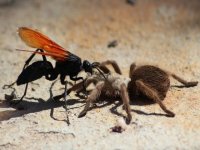
https://en.wikipedia.org/wiki/Tarantula_hawk
A Tarantula Hawk is neither a Tarantula or a Hawk. Instead it's a spider wasp, a wasp that hunts and kills Tarantulas. The fermale T. Hawk will sting and paralyse it's Tarantulian(that's a new word invented specifically for the WHC) prey before dragging it to its specially prepared breeding ground where it will lay a single egg in the Tarantula's abdomen. When the egg hatches the larvae will eat the spider form the inside out taking care not to eat any of the vital organs thus prolonging the Tarantulas life(and agony) and the larva's food source. After several weeks the larva will eat its way out of the abdomen and go off in its attempt to repeat the life cycle.
As a bonus, the Tarantual Hawk is nectarivorous which means it eats a lot of nectar. It can consume so much fermented fruit that it becomes intoxicated and cannot fly.
Tasmanian Devil
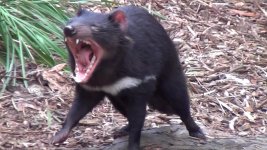
https://en.wikipedia.org/wiki/Tasmanian_devil
The Tassie Devil is a staple of the WHC. Always puts up a solid showing even if it never really threatens the a run at the title. Could this be its year? It's the size of a small dog and is characterised by its stocky and muscular build, sharp, non retractable claws keen sense of smell and ferocity when feeding(they can devour the entire corpse of its victim, leaving nothing behind-no skin, no fur, no bones, nothing). It has one of the most powerful bites per unit body mass of any extant mammal land predator and will eat anything-prey, carrion or household rubbish. It has good speed and endurance, can swim and climb trees.
Northern Goshawk

https://en.wikipedia.org/wiki/Northern_goshawk
The first of several debutants in this years competition. The Northern Goshawk is a territorial, hunting hawk. It uses a combination of rapid flight and ambushing to hunt its prey which usually consists of small-medium sized mammals and medium-large sized birds. Will need a lot of championing if it wishes to have a successful tournament.
Orca
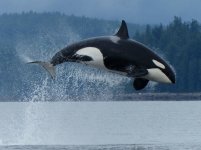
https://en.wikipedia.org/wiki/Killer_whale
Orca, colloquially known as the Killer Whale, is a former champion who has struggled in recent seasons to reach its former heights in this contest. A competitor in every edition of the WHC he doesn't need too much introduction. They are enormous beasts, kings of the seas and as such are apex predators. Can hunt and kill great white sharks and any other beast that it fancies.
Bulldog Ant
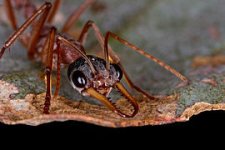
This ant has excellent eyesight and a highly painful sting. Extremely aggressive with intruders they will fan out and kill anythin that disturbs their nest. They possess one of the most toxic venoms in the insect world.
Honey Badger
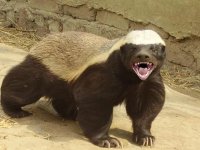
https://i.ytimg.com/vi/x9Jr9JKpsX8/maxresdefault.jpg
Here he is folks, possibly the most beloved and reviled competitor in the history of WHC. This beast is perfectly designed to do well in this tournament, small, powerful, violent, aggressive and willing to fight anything it has reached multiple finals but surprisingly never taken the coveted trophy home. It has a huge number of fanboys who propel it vociferously through the competition ensuring that any contest it is in will be played out in front of huge crowds. The very nature of its support however has created an equally large backlash against it. Wherever the honey badger competes skullduggery - or at the very least accusations of it- are not far behind. How will it fare this year? Beaten fairly? Cheated out of victory? Or will this, finally, be the year that it leaves the WHC as champion? Whatever happens it'll be a wild ride which is entirely in fitting for this wild, aggressive fighting machine.
Hippo
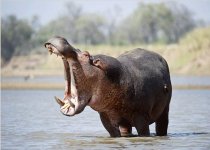
https://en.wikipedia.org/wiki/Hippopotamus
Shit just got real in group A. Hot on the heels of the former champ Orca and the 'peoples champ' Honey Badger comes another elite competitor and former champion in the sizable shape of the Hippo. This bad tempered brute lives among some of the most fearsome animals in the world and more than holds his own. A mostly herbivorous beast the Hippo has no real predators or any particular reason to fight. But fight it does. And it fights for the heck of it, the sheer thrill of the fight. Lions? Yep, it'll have a go. for no reason? Crocs? Yep, it'll ruck if it wants to. Humans? Absolutely? Passing boats? Yeah, why not pile into it?
Desert Long Eared Bat
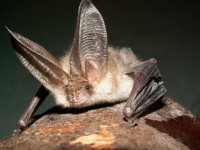
https://en.wikipedia.org/wiki/Desert_long-eared_bat
Another debutant, it's hard not to feel that it's another beast with its work cut out to qualify. However it's a tough little bugger so with some good championing who knows what it can achieve? It's a carnivorous animal that is known to hunt and eat scorpions. When it catches its prey it bites its head off, taking repeated stings from the scorpions tail to its face. It shakes off this venom and carries on devouring the scorpion.
Komodo Dragon
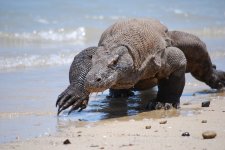
https://en.wikipedia.org/wiki/Komodo_dragon
The komodo dragon is the largest living lizard on the planet. It hunts and ambushes its prey which consists of animals up to the size of deers although they are also cannibalistic and are known to eat their young. It is said to have a poisonous bite. It pins down its prey and tears great chunks out of it. Swallowing is a slow process for the K.D so it will sometimes try to speed up the process by ramming its food against a tree to help shovel it down its throat. They can ram the trees so hard that they end up knocking the trees down.
Chinstrap Penguin
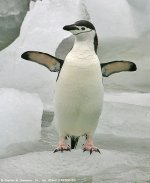
https://en.wikipedia.org/wiki/Chinstrap_penguin
A third debutant in group A and the first penguin to ever compete in the WHC(although the second will be coming up in one of the later groups). I'll be honest, I know little about these animals and wikipedia hasn't helped me much. It's going to need a lot of championing as as far as I can see it's main claim to fame is being very hardy. It must have some support as it was the third beast to be nominated and seconded in the nominations thread. Good luck to it.
You should know what it's all about by now but, in case you don't, this is a tournament that is all about a beasts hardness. It's not about the size of the dog in the fight but the size of the fight in the dog. Now, we all have differing opinions on what makes a beast hard but it must surely include factors such as aggression, ability to hand out a pasting, ability to take a pasting and anything else along those lines.
These are the group stages. There are ten beasts. Four will progress to the knockout rounds. You have ONE vote, so use it wisely.
If you nominated or seconded a beast, PLEASE support it here. A good marketing campaign and vocal support can do wonders for a beasts tournaments. Likewise, a failure to do so will inevitably lead to a miserable defeat and an embarrassing early exit.
So, without further ado, lets meet the first ten competitors in this years Worlds Hardest Creature competition:
Tarantula Hawk

https://en.wikipedia.org/wiki/Tarantula_hawk
A Tarantula Hawk is neither a Tarantula or a Hawk. Instead it's a spider wasp, a wasp that hunts and kills Tarantulas. The fermale T. Hawk will sting and paralyse it's Tarantulian(that's a new word invented specifically for the WHC) prey before dragging it to its specially prepared breeding ground where it will lay a single egg in the Tarantula's abdomen. When the egg hatches the larvae will eat the spider form the inside out taking care not to eat any of the vital organs thus prolonging the Tarantulas life(and agony) and the larva's food source. After several weeks the larva will eat its way out of the abdomen and go off in its attempt to repeat the life cycle.
As a bonus, the Tarantual Hawk is nectarivorous which means it eats a lot of nectar. It can consume so much fermented fruit that it becomes intoxicated and cannot fly.
Tasmanian Devil

https://en.wikipedia.org/wiki/Tasmanian_devil
The Tassie Devil is a staple of the WHC. Always puts up a solid showing even if it never really threatens the a run at the title. Could this be its year? It's the size of a small dog and is characterised by its stocky and muscular build, sharp, non retractable claws keen sense of smell and ferocity when feeding(they can devour the entire corpse of its victim, leaving nothing behind-no skin, no fur, no bones, nothing). It has one of the most powerful bites per unit body mass of any extant mammal land predator and will eat anything-prey, carrion or household rubbish. It has good speed and endurance, can swim and climb trees.
Northern Goshawk

https://en.wikipedia.org/wiki/Northern_goshawk
The first of several debutants in this years competition. The Northern Goshawk is a territorial, hunting hawk. It uses a combination of rapid flight and ambushing to hunt its prey which usually consists of small-medium sized mammals and medium-large sized birds. Will need a lot of championing if it wishes to have a successful tournament.
Orca

https://en.wikipedia.org/wiki/Killer_whale
Orca, colloquially known as the Killer Whale, is a former champion who has struggled in recent seasons to reach its former heights in this contest. A competitor in every edition of the WHC he doesn't need too much introduction. They are enormous beasts, kings of the seas and as such are apex predators. Can hunt and kill great white sharks and any other beast that it fancies.
Bulldog Ant

This ant has excellent eyesight and a highly painful sting. Extremely aggressive with intruders they will fan out and kill anythin that disturbs their nest. They possess one of the most toxic venoms in the insect world.
Honey Badger

https://i.ytimg.com/vi/x9Jr9JKpsX8/maxresdefault.jpg
Here he is folks, possibly the most beloved and reviled competitor in the history of WHC. This beast is perfectly designed to do well in this tournament, small, powerful, violent, aggressive and willing to fight anything it has reached multiple finals but surprisingly never taken the coveted trophy home. It has a huge number of fanboys who propel it vociferously through the competition ensuring that any contest it is in will be played out in front of huge crowds. The very nature of its support however has created an equally large backlash against it. Wherever the honey badger competes skullduggery - or at the very least accusations of it- are not far behind. How will it fare this year? Beaten fairly? Cheated out of victory? Or will this, finally, be the year that it leaves the WHC as champion? Whatever happens it'll be a wild ride which is entirely in fitting for this wild, aggressive fighting machine.
Hippo

https://en.wikipedia.org/wiki/Hippopotamus
Shit just got real in group A. Hot on the heels of the former champ Orca and the 'peoples champ' Honey Badger comes another elite competitor and former champion in the sizable shape of the Hippo. This bad tempered brute lives among some of the most fearsome animals in the world and more than holds his own. A mostly herbivorous beast the Hippo has no real predators or any particular reason to fight. But fight it does. And it fights for the heck of it, the sheer thrill of the fight. Lions? Yep, it'll have a go. for no reason? Crocs? Yep, it'll ruck if it wants to. Humans? Absolutely? Passing boats? Yeah, why not pile into it?
Desert Long Eared Bat

https://en.wikipedia.org/wiki/Desert_long-eared_bat
Another debutant, it's hard not to feel that it's another beast with its work cut out to qualify. However it's a tough little bugger so with some good championing who knows what it can achieve? It's a carnivorous animal that is known to hunt and eat scorpions. When it catches its prey it bites its head off, taking repeated stings from the scorpions tail to its face. It shakes off this venom and carries on devouring the scorpion.
Komodo Dragon

https://en.wikipedia.org/wiki/Komodo_dragon
The komodo dragon is the largest living lizard on the planet. It hunts and ambushes its prey which consists of animals up to the size of deers although they are also cannibalistic and are known to eat their young. It is said to have a poisonous bite. It pins down its prey and tears great chunks out of it. Swallowing is a slow process for the K.D so it will sometimes try to speed up the process by ramming its food against a tree to help shovel it down its throat. They can ram the trees so hard that they end up knocking the trees down.
Chinstrap Penguin

https://en.wikipedia.org/wiki/Chinstrap_penguin
A third debutant in group A and the first penguin to ever compete in the WHC(although the second will be coming up in one of the later groups). I'll be honest, I know little about these animals and wikipedia hasn't helped me much. It's going to need a lot of championing as as far as I can see it's main claim to fame is being very hardy. It must have some support as it was the third beast to be nominated and seconded in the nominations thread. Good luck to it.
Last edited:


